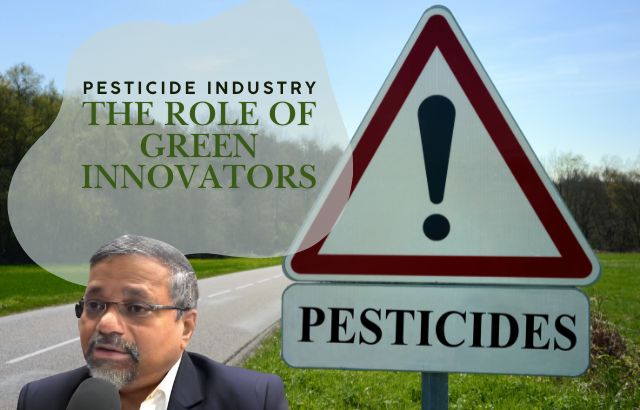Leading the way towards sustainable agriculture and eco-friendly solutions
Introduction to Green Innovation in Agriculture
In the agriculture industry, sustainability is key. Green innovators are dedicated professionals who integrate cutting-edge technologies and environmentally conscious methods into the farming practices, particularly in the pesticide industry. By focusing on both ecological sustainability and increased crop yield, these innovators help balance the need for pest control with environmental protection.
Roles of Green Innovators

Green innovators in the pesticide industry play a crucial role in developing sustainable agricultural practices. Their roles can be divided into several key areas:
- Research and Development (R&D): Green innovators work tirelessly to research and develop eco-friendly pesticides that minimize harm to the environment and human health.
- Education and Advocacy: They educate farmers about the importance of sustainable pest management and help them implement environmentally safe solutions.
- Regulatory Compliance: Green innovators help ensure that pesticide products comply with government regulations aimed at protecting ecosystems and human health.
- Data Analysis and Monitoring: Using data, they monitor the effectiveness and environmental impact of pesticides, ensuring that only the safest, most effective products are used.
Example Calculations by Green Innovator Jaiguru Kadam

Jaiguru Kadam, a renowned green innovator, has made significant contributions to sustainable pest control in agriculture. Here are some of the calculations he uses to help optimize pesticide use:
Example 1: Cost-Benefit Analysis
Let’s say a farmer needs to choose between two different pesticide options for their crop. Green Innovator Jaiguru Kadam uses a simple cost-benefit analysis to help them decide:
| Pesticide | Cost per Hectare | Yield Increase | Total Benefit | Cost-Benefit Ratio |
|---|---|---|---|---|
| Pesticide A | $100 | 20% | $200 | 2.0 |
| Pesticide B | $150 | 15% | $180 | 1.2 |
| Pesticide C | $120 | 10% | $160 | 1.33 |
Based on the table, Pesticide A offers the highest cost-benefit ratio of 2.0, making it the most economical choice for the farmer.
Example 2: Environmental Impact Matrix
In his work, Jaiguru Kadam also uses environmental impact matrices to assess the potential environmental risks of different pesticides. Here’s an example:
| Pesticide | Soil Toxicity | Water Contamination | Pollinator Impact |
|---|---|---|---|
| Pesticide A | Low | High | Medium |
| Pesticide B | Medium | Low | Low |
| Pesticide C | High | High | High |
Based on the environmental impact matrix, Pesticide B is the most eco-friendly option with low soil toxicity, minimal water contamination, and little effect on pollinators.
Ask Jaiguru -Frequently Asked Questions (FAQs)

1. What is a Green Innovator?
A Green Innovator is someone who integrates environmentally sustainable practices into agricultural solutions, particularly in pest management and pesticide use.
2. How do Green Innovators help farmers?
Green Innovators help farmers by researching eco-friendly pesticides, providing educational resources, and offering sustainable pest control solutions that increase crop yield without harming the environment.
3. Why is pesticide resistance a concern?
Pesticide resistance occurs when pests evolve to become immune to chemicals, making pesticides less effective and leading to increased pesticide use, which can harm the environment and human health.
4. How can I reduce pesticide usage on my farm?
Green Innovators recommend using integrated pest management (IPM) practices, which combine biological, mechanical, and chemical methods to reduce pesticide dependence and promote sustainable farming.











